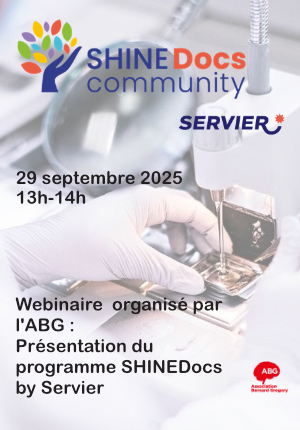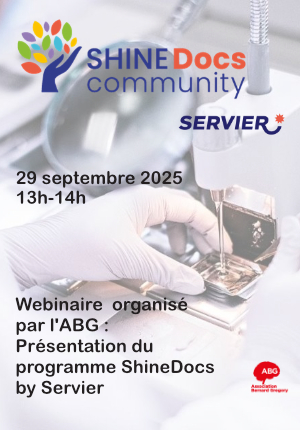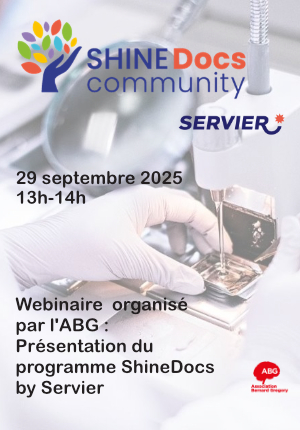Simulations numériques MHD 3D paramétriques de la génération des « switchbacks » induite par des jets solaires coronaux. // Parametric 3D MHD numerical simulations of the generation of switchbacks induced by solar coronal jets
|
ABG-133178
ADUM-67209 |
Sujet de Thèse | |
| 20/08/2025 |
Sorbonne Université SIS (Sciences, Ingénierie, Santé)
Palaiseau Cedex - Ile-de-France - France
Simulations numériques MHD 3D paramétriques de la génération des « switchbacks » induite par des jets solaires coronaux. // Parametric 3D MHD numerical simulations of the generation of switchbacks induced by solar coronal jets
- Terre, univers, espace
Soleil, Activité et vent solaire, Héliosphère interne, Magnétohydrodynamique, Expérimentation Numérique, Telescope Solaire THEMIS
Sun, Solar activity and solar wind, Inner heliosphere, Magnetohydrodynamics, Numerical experiments, THEMIS solar telescope
Sun, Solar activity and solar wind, Inner heliosphere, Magnetohydrodynamics, Numerical experiments, THEMIS solar telescope
Description du sujet
Au cours de ses approches sans précédent du Soleil, la mission Parker Solar Probe (PSP, NASA) a fait une découverte intrigante : des déflexions du champ magnétique très fréquentes et abruptes, appelées *switchbacks* (SB), dans le vent solaire. En raison de leur omniprésence dans l'héliosphère interne, et de leur quasi-absence relative à proximité de l'orbite terrestre et au-delà, les SB sont considérés comme un ingrédient clé dans les mécanismes complexes de génération du vent solaire.
Les jets solaires, phénomènes très couramment observés dans l'atmosphère solaire et se produisant sur une large gamme d'échelles spatiales et temporelles, sont récemment apparus comme de solides candidats au rôle de phénomènes précurseurs de la formation des SB.
L'objectif global du projet JET2SB est d'aborder les questions suivantes : Les événements de type jet solaire induisent-ils des SB, et dans quelle mesure ? Quels sont les mécanismes physiques impliqués dans la propagation des jets et la formation des SB ?
Le/la candidat.e sélectionné.e sera au cœur du projet JET2SB et travaillera principalement sur différents aspects de la modélisation numérique 3D dans le cadre du paradigme de la magnétohydrodynamique (MHD), concernant la génération auto-cohérente des jets solaires, leur propagation vers l'héliosphère interne et la formation des switchbacks. Les simulations seront mises en place en s'appuyant sur les contraintes issues des observations et mesures les plus récentes, provenant à la fois d'instruments spatiaux et d'observations au sol. Le.la doctorant.e bénéficiera d'un accès privilégié au télescope THEMIS du CNRS-INSU, un télescope solaire optique de classe 1 mètre, principalement dédié à l'étude du magnétisme solaire et des processus dynamiques au sein de l'atmosphère du Soleil (tels que les taches solaires et les éruptions solaires).
Le.la doctorant.e utilisera également les observations issues des missions spatiales héliosphériques les plus récentes, telles que Parker Solar Probe, Solar Orbiter, ainsi que la mission PUNCH, récemment lancée. Les simulations réalisées dans le cadre de de la thèse permettront d'interpréter les données issues de ces grands projets de physique héliosphérique.
------------------------------------------------------------------------------------------------------------------------------------------------------------------------
------------------------------------------------------------------------------------------------------------------------------------------------------------------------
During its unprecedented approaches of the Sun, the Parker Solar Probe (PSP, NASA) mission has made the puzzling discovery of very frequent and abrupt deflections of the magnetic field, the so-called switchbacks (SBs), in the solar wind. Because of their ubiquity in the inner heliosphere, and relative quasi-absence close to the Earth orbit and beyond, SBs are considered as a key ingredient on the complex generation mechanisms of the solar wind. Solar jets, which are phenomena very commonly seen in the solar atmosphere, occurring over a wide range of spatial and temporal scales, have recently appeared as strong seed phenomena candidates for the formation of SB. The overall objective of the JET2SB project is to address the following questions: Do, and to which extend, solar jet-like events induce Switchbacks (SBs)? What are the physical mechanisms involved in the jet propagation and SB formation?
The selected candidate will be at the core of the JET2SB projects and mainly working on different aspects of the 3D numerical modelling within the magnetohydrodynamics (MHD) paradigm, of the self-consistent generation of solar jets, their propagation toward the inner heliosphere and the formation of switchbacks. The simulations will be set-up using constraints from the latest observations and measurements from both space instruments and ground-based observations. The PhD student shall benefit from privileged access to the THEMIS telescope of CNRS-INSU, a 1-meter-class optical solar telescope, primarily dedicated to studying solar magnetism and the dynamical processes within the Sun's atmosphere (such as sunspots and solar flares). The PhD candidate will also make use of observations from the latest heliospheric space missions, such as Parker Solar Probe, Solar orbiter as well as the recently launched PUNCH. The simulations carried within the PhD shall enable to interpret the data from these major projects of heliophysics.
------------------------------------------------------------------------------------------------------------------------------------------------------------------------
------------------------------------------------------------------------------------------------------------------------------------------------------------------------
Début de la thèse : 01/11/2025
Les jets solaires, phénomènes très couramment observés dans l'atmosphère solaire et se produisant sur une large gamme d'échelles spatiales et temporelles, sont récemment apparus comme de solides candidats au rôle de phénomènes précurseurs de la formation des SB.
L'objectif global du projet JET2SB est d'aborder les questions suivantes : Les événements de type jet solaire induisent-ils des SB, et dans quelle mesure ? Quels sont les mécanismes physiques impliqués dans la propagation des jets et la formation des SB ?
Le/la candidat.e sélectionné.e sera au cœur du projet JET2SB et travaillera principalement sur différents aspects de la modélisation numérique 3D dans le cadre du paradigme de la magnétohydrodynamique (MHD), concernant la génération auto-cohérente des jets solaires, leur propagation vers l'héliosphère interne et la formation des switchbacks. Les simulations seront mises en place en s'appuyant sur les contraintes issues des observations et mesures les plus récentes, provenant à la fois d'instruments spatiaux et d'observations au sol. Le.la doctorant.e bénéficiera d'un accès privilégié au télescope THEMIS du CNRS-INSU, un télescope solaire optique de classe 1 mètre, principalement dédié à l'étude du magnétisme solaire et des processus dynamiques au sein de l'atmosphère du Soleil (tels que les taches solaires et les éruptions solaires).
Le.la doctorant.e utilisera également les observations issues des missions spatiales héliosphériques les plus récentes, telles que Parker Solar Probe, Solar Orbiter, ainsi que la mission PUNCH, récemment lancée. Les simulations réalisées dans le cadre de de la thèse permettront d'interpréter les données issues de ces grands projets de physique héliosphérique.
------------------------------------------------------------------------------------------------------------------------------------------------------------------------
------------------------------------------------------------------------------------------------------------------------------------------------------------------------
During its unprecedented approaches of the Sun, the Parker Solar Probe (PSP, NASA) mission has made the puzzling discovery of very frequent and abrupt deflections of the magnetic field, the so-called switchbacks (SBs), in the solar wind. Because of their ubiquity in the inner heliosphere, and relative quasi-absence close to the Earth orbit and beyond, SBs are considered as a key ingredient on the complex generation mechanisms of the solar wind. Solar jets, which are phenomena very commonly seen in the solar atmosphere, occurring over a wide range of spatial and temporal scales, have recently appeared as strong seed phenomena candidates for the formation of SB. The overall objective of the JET2SB project is to address the following questions: Do, and to which extend, solar jet-like events induce Switchbacks (SBs)? What are the physical mechanisms involved in the jet propagation and SB formation?
The selected candidate will be at the core of the JET2SB projects and mainly working on different aspects of the 3D numerical modelling within the magnetohydrodynamics (MHD) paradigm, of the self-consistent generation of solar jets, their propagation toward the inner heliosphere and the formation of switchbacks. The simulations will be set-up using constraints from the latest observations and measurements from both space instruments and ground-based observations. The PhD student shall benefit from privileged access to the THEMIS telescope of CNRS-INSU, a 1-meter-class optical solar telescope, primarily dedicated to studying solar magnetism and the dynamical processes within the Sun's atmosphere (such as sunspots and solar flares). The PhD candidate will also make use of observations from the latest heliospheric space missions, such as Parker Solar Probe, Solar orbiter as well as the recently launched PUNCH. The simulations carried within the PhD shall enable to interpret the data from these major projects of heliophysics.
------------------------------------------------------------------------------------------------------------------------------------------------------------------------
------------------------------------------------------------------------------------------------------------------------------------------------------------------------
Début de la thèse : 01/11/2025
Nature du financement
Précisions sur le financement
Autre financement ou appel à projet
Présentation établissement et labo d'accueil
Sorbonne Université SIS (Sciences, Ingénierie, Santé)
Etablissement délivrant le doctorat
Sorbonne Université SIS (Sciences, Ingénierie, Santé)
Ecole doctorale
127 Astronomie et Astrophysique d'Ile de France
Profil du candidat
Master (ou équivalent) en physiques ou calcul scientifique
Bases de physique des plasmas
Bases de magnétohydrodynamique
Bases d'analyse numérique
Connaissance intermédiaire d'au moins un langage de programmation scientifique
Niveau d'anglais égal ou supérieur à B2
Bases de techniques de communication scientifique : communication orale, écriture scientifique
Capacités de travail collaboratif en équipe
MSc (or equivalent degree) in physics or computational sciences Basics of plasma physics Basics of magnetohydrodynamics Basic of numerical analysis Intermediate knowledge of at least one scientific programming language English proficiency equal or superior to B2 Basics of scientific communication technique: oral communication, scientific writing, … Appetency for collaboration and Teamwork
MSc (or equivalent degree) in physics or computational sciences Basics of plasma physics Basics of magnetohydrodynamics Basic of numerical analysis Intermediate knowledge of at least one scientific programming language English proficiency equal or superior to B2 Basics of scientific communication technique: oral communication, scientific writing, … Appetency for collaboration and Teamwork
22/09/2025
Postuler
Fermer
Vous avez déjà un compte ?
Nouvel utilisateur ?
Besoin d'informations sur l'ABG ?
Vous souhaitez recevoir nos infolettres ?
Découvrez nos adhérents
 CESI
CESI  ONERA - The French Aerospace Lab
ONERA - The French Aerospace Lab  SUEZ
SUEZ  CASDEN
CASDEN  ASNR - Autorité de sûreté nucléaire et de radioprotection - Siège
ASNR - Autorité de sûreté nucléaire et de radioprotection - Siège  Aérocentre, Pôle d'excellence régional
Aérocentre, Pôle d'excellence régional  PhDOOC
PhDOOC 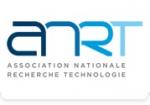 ANRT
ANRT  Laboratoire National de Métrologie et d'Essais - LNE
Laboratoire National de Métrologie et d'Essais - LNE  Groupe AFNOR - Association française de normalisation
Groupe AFNOR - Association française de normalisation  Tecknowmetrix
Tecknowmetrix  MabDesign
MabDesign  Institut Sup'biotech de Paris
Institut Sup'biotech de Paris  Ifremer
Ifremer  MabDesign
MabDesign  Nokia Bell Labs France
Nokia Bell Labs France  Généthon
Généthon 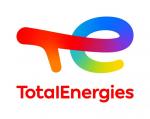 TotalEnergies
TotalEnergies 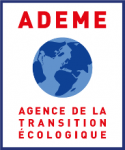 ADEME
ADEME


